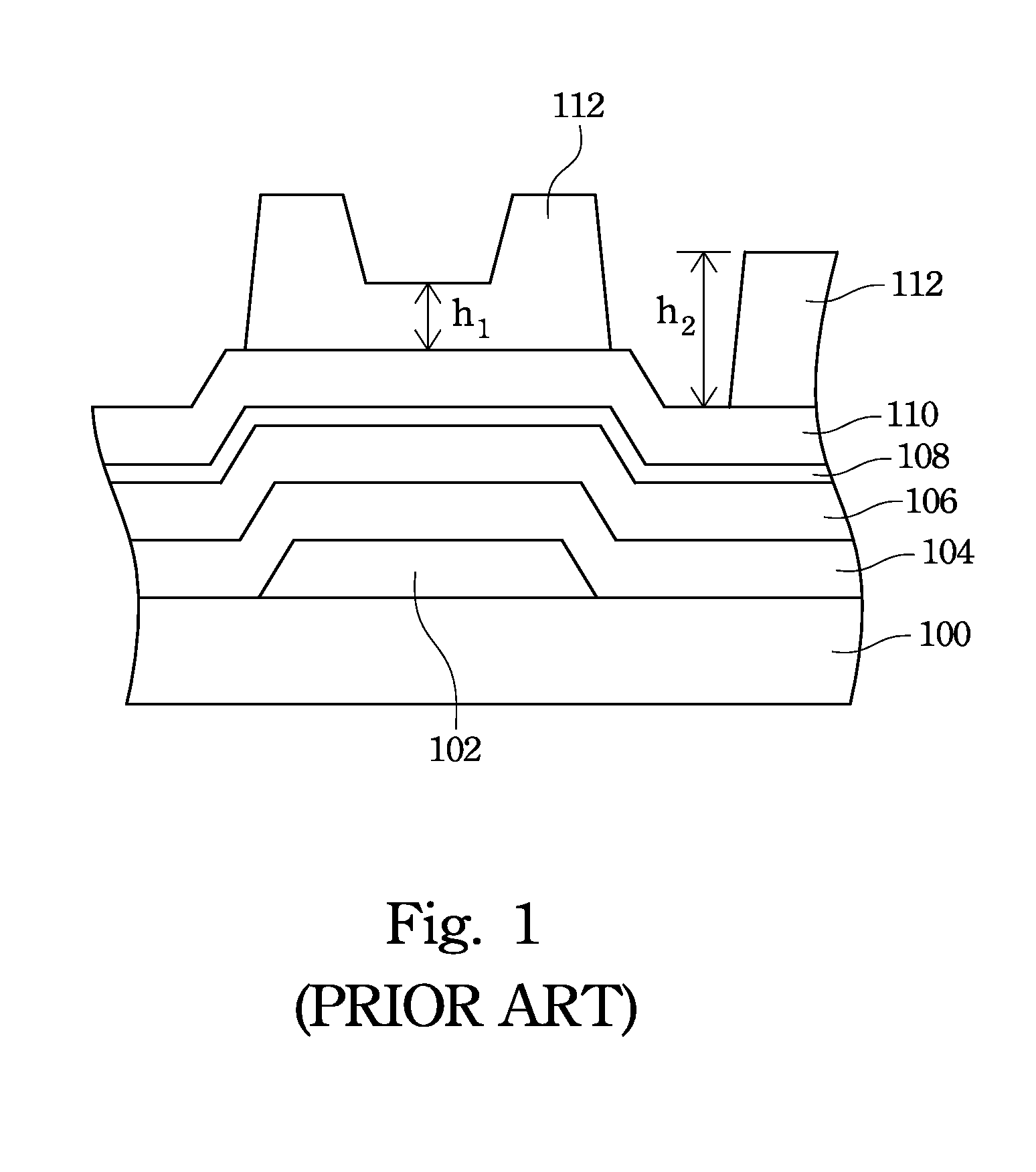Method of manufacturing a thin film transistor matrix substrate
a technology of thin film transistors and substrates, applied in the direction of instruments, semiconductor devices, electrical equipment, etc., can solve the problems of difficult control of these two factors, increased manufacturing time, and high cost of photo masks, so as to reduce the number of required photo masks in the process, reduce the thickness of the semiconductor layer, and improve the effect of manufacturing efficiency
- Summary
- Abstract
- Description
- Claims
- Application Information
AI Technical Summary
Benefits of technology
Problems solved by technology
Method used
Image
Examples
Embodiment Construction
[0030]The present invention will be apparent from the following detailed description, which proceeds with reference to the accompanying drawings, wherein the same references relate to the same elements.
[0031]FIGS. 2A to 2F are schematic cross-sectional views of manufacturing an inverted staggered back-channel-protected thin film transistor matrix substrate according to a preferred embodiment of the invention. As shown in FIG. 2A, a conductive layer is defined on a transparent substrate 200 in a photo mask process, thereby forming a gate electrode 202, a lower electrode of a storage capacitor 204, a signal electrode 206, and a gate electrode pads 208, and signal electrode pads 209. The transparent substrate 200 is a glass substrate. The material of the conductive layer is Al, Mo, Cu, alloys thereof, and metal nitrides. The conductive layer may have a single-layer or a multi-layer structure formed from the above-mentioned materials.
[0032]With reference to FIG. 2B, the transparent subs...
PUM
 Login to View More
Login to View More Abstract
Description
Claims
Application Information
 Login to View More
Login to View More - R&D
- Intellectual Property
- Life Sciences
- Materials
- Tech Scout
- Unparalleled Data Quality
- Higher Quality Content
- 60% Fewer Hallucinations
Browse by: Latest US Patents, China's latest patents, Technical Efficacy Thesaurus, Application Domain, Technology Topic, Popular Technical Reports.
© 2025 PatSnap. All rights reserved.Legal|Privacy policy|Modern Slavery Act Transparency Statement|Sitemap|About US| Contact US: help@patsnap.com



